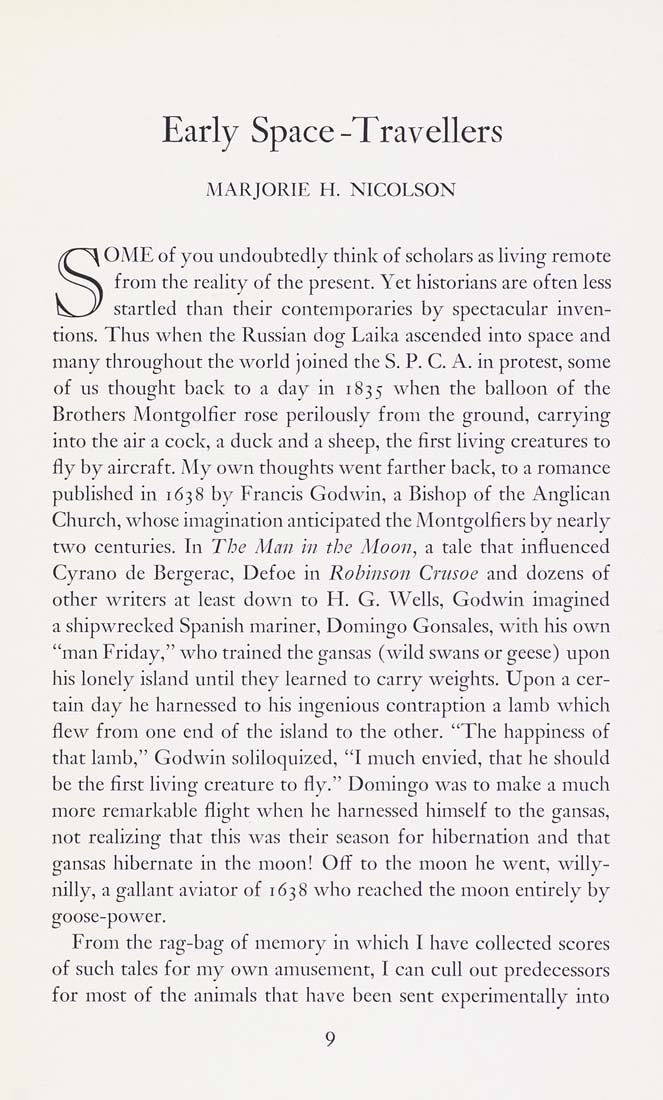Columbia Library columns (v.9(1959Nov-1960May))
(New York : Friends of the Columbia Libraries. )
|
||
|
|
|
|
| v.9,no.1(1959:Nov): Page 9 |

Early Space-Travellers MARJORIE H. NICOLSON \ OME of you undoubtedly think of scholars as living remote from the reality of the present. Yet historians are often less startled than their contemporaries by spectacular inven¬ tions. Thus when the Russian dog Laika ascended into space and many throughout the world joined the S. P. C. A. in protest, some of us thought back to a day in 1835 when the balloon of the Brothers A'lontgolfier rose perilously from the ground, carrying into the air a cock, a duck and a sheep, the first living creatures to fly by aircraft. My own thoughts went farther back, to a romance published in 1638 by Francis Godwin, a Bishop of the Anglican Church, whose imagination anticipated the Montgolfiers by nearly two centuries. In The Man in the Moon, a tale that influenced Cyrano de Bergerac, Defoe in Robinson Crusoe and dozens of other writers at least down to H. G. Wells, Godwin imagined a shipwrecked Spanish mariner, Domingo Gonsales, with his own "man Friday," who trained the gansas (wild swans or geese) upon his lonely island until they learned to carry weights. Upon a cer¬ tain day he harnessed to his ingenious contraption a lamb which flew from one end of the island to the other. "The happiness of that lamb," Godwin soliloquized, "I much envied, that he should be the first living creature to fly." Domingo was to make a much more remarkable flight when he harnessed himself to the gansas, not realizing that this was their season for hibernation and that gansas hibernate in the moon! Off to the moon he went, willy- nilly, a gallant aviator of 1638 who reached the moon entirely by goose-power. From the rag-bag of memory in which I have collected scores of such tales for my own amusement, I can cull out predecessors for most of the animals that have been sent experimentally into |
| v.9,no.1(1959:Nov): Page 9 |







